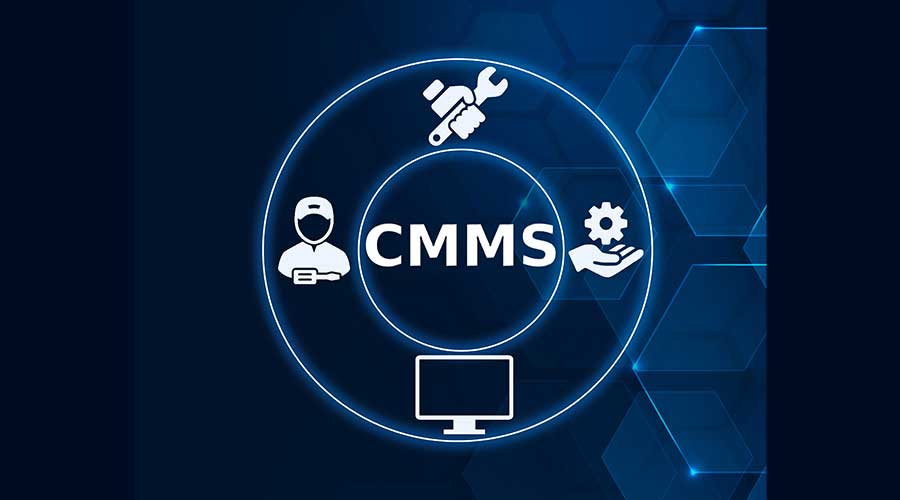Using Data to Make the Move to Conditioned-Based Maintenance
CBM allows technicians to perform the right maintenance at the right time and is an efficient and cost-effective use of resources
By Dan Hounsell, Senior Editor
Maintenance and engineering managers are always on the lookout for ways to improve the efficiency and effectiveness of their departments. From increasing the productivity of front-line technicians to maximizing available resources, they are constantly challenged to find strategies that can help them do more with less. Surprisingly, one of the most urgent challenges now facing managers — finding entry-level technicians to address staffing shortages — might provide a path to help achieve this goal.
The path involves collecting, analyzing and using all available facilities data to help departments implement condition-based maintenance (CBM), according to John Rimer, president of FM360 Consulting, who presented his ideas to attendees of the recent World Workplace 2023 in Denver.
Rimer says the worker shortage is creating an opportunity for managers to implement CBM in order to help departments and technicians work smarter and more efficiently, adding that more than 55 percent of organizations still operate in reactive maintenance mode, the least efficient type of maintenance strategy.
On the opposite end of the efficiency spectrum is CBM, which incorporates data from visual inspections, scheduled tests and sensor devices to gauge equipment performance and asset management and use the results to determine the most cost-efficient time to perform maintenance.
CBM incorporates data from a range of facilities sources, including building controls, software, monitoring and metering devices, and technicians’ rounds and readings, Rimer says, adding it enables technicians to perform the right maintenance at the right time and is a more efficient use of resources than reactive, preventive and predictive maintenance.
Starting points
Rimer says managers can start on the path to CBM by setting priorities for the process, assessing the condition and role of existing equipment, assigning each piece of equipment a criticality rating, identifying best maintenance practices and, perhaps most importantly, optimizing the department’s computerized maintenance management system (CMMS) or integrated work management system (IWMS).
The process will enable managers to maximize resource utilization, improve staff efficiency and make data-driven decisions.
Managers looking to increase the use of technology in facilities maintenance routinely encounter resistance from technicians who are reluctant to buy into the process. Rimer advises managers to work with these reluctant technicians in order to help them understand the benefits of CMMS data and, ultimately, CBM.
“Some paper is okay,” he says. “Don’t force mobile devices onto technicians. It’s much easier to get devices into technicians’ hands once I show them the things I can do with the data. Then they can’t wait.”
Leverage the connected environment
One critical realization for managers seeking to move their departments to CBM is that most facilities already have critical sources of data at their disposal that they can tap into for critical data. These connected systems include controls, monitoring and metering systems, and CMMS and IWMS.
“You already have a lot of technology in place,” Rimer says, adding that managers can benefit from incorporating even more data sources to facilities’ design specs and ensuring these data sources remain in the plans despite inevitable pressures to cut costs during design and construction.
“Do not let them value engineer these data sources out,” he says. “We all know value engineering is an oxymoron.”
He also advises managers to recognize the data-gathering benefits of ongoing commissioning — not just commissioning at the start of a building’s life — including the ability to aggregate and analyze essential facilities data.
Among the most helpful types of data available to managers seeking to move to CBM are equipment alerts and failures, which often spotlight the most pressing and problematic maintenance issues. By documenting the resulting equipment downtime and quantifying its impact on the organization, managers can build the case for increased attention to facility and equipment maintenance.
The process of learning from equipment alerts and failures also involves analyzing the failure codes by equipment type, documenting the lessons learned from the event, optimizing maintenance practices, updating related emergency operating procedures, and identifying trends and indicators arising from the event.
Inevitably, questions arise regarding the impact of artificial intelligence (AI) on facilities management and its connection to CBM. Rimer acknowledges the likely impact and connection but says many facilities are not yet ready for AI.
"Are we there yet?” he asks. “No. But it’s time to prepare the soil so when it gets here, you can take advantage of it.”
To pave the way for CBM and AI requires the same essential component — a reliable flow of accurate data on facilities systems and equipment. AI technologies enable computers to simulate human intelligence, and it allows managers to analyze pools of data to provide greater clarity and understanding of the many factors affecting the condition and performance of facilities’ systems and equipment. Specifically, Rimer says, AI can help managers avoid the need for manual analysis of facilities data, and it can identify deviations from optimum conditions and likely failures.
One strategy managers can use to help their departments along the path to CBM involves using the results of one incident to demonstrate the need for changes such as implementing more preventive maintenance (PM) tasks in higher-priority areas and setting aside time or money to focus on PMs. Managers also can track and report the resulting unscheduled downtime, which is easy for the C-suite to identify, separate, quantify and understand.
One session attendee offered an example of a situation in which the ability to successfully gather data, quantify and report on the condition of one critical piece of equipment would have saved his organization thousands of dollars. A failing chiller serving the attendee’s Alabama medical clinic broke down two years ago, and buying a replacement chiller would have cost $150,000. Managers overseeing the clinic were unable to build a strong, data-driven case to purchase the replacement chiller at the time, and the clinic has been forced to rent a chiller as they wait for a unit to become available. The delay so far has cost the clinic $500,000 in rental fees.
“We knew we needed to replace it,” he said. “We just couldn’t convince (clinic owners) to do it in time.”
Dan Hounsell is senior editor for the facilities market. He has more than 30 years of experience writing about facilities maintenance, engineering and management.
Related Topics:












